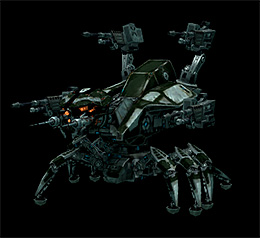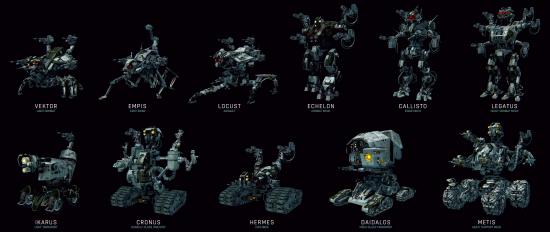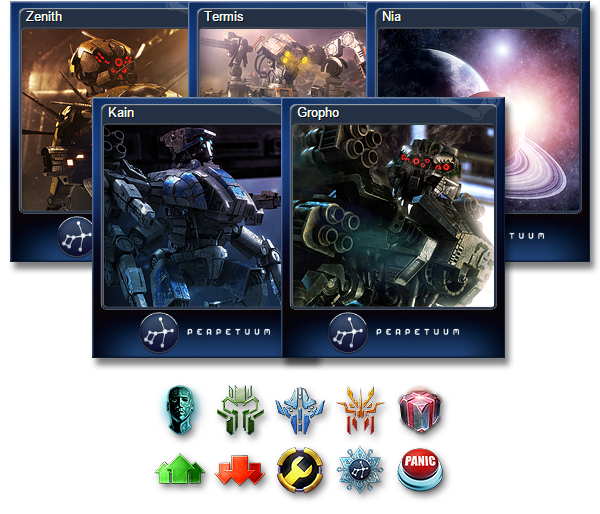Many patch notes, forum wars, and misplaced croissants ago, Perpetuum’s time-based skill progression system was created with the premise that it should create equal opportunity for everyone to progress their characters, regardless of playtime.
Be that as it may, an often recurring fear that potential new players have is that they can never be competitive enough to take on old players who have gathered hundreds of thousands or even millions of Extension Points over the years.
Both us devs and a lot of our players try to convince these newcomers that they can quickly become as skilled as old Agents in a specific field, and that veterans only have the advantage of being more versatile, and of course this is true to some extent. But as the years passed by, this argument started to become more and more weak, up to the point where even we didn’t believe in it, as the differences started to become really apparent.
Thus, we recently made it a priority to provide a solution that would try to address these concerns. We have come up with an upgrade to the EP system that has two main components.
EP rewards
The idea to give players EP as a reward for ingame activities isn’t new, it’s been popping up on the forums for as long as I can remember. From a financial viewpoint, the idea wasn’t really feasible as long as the game was subscription-based, but since we dropped that, it slowly started to turn from “why not” into “this might be even good”.
Nowadays a lot of our players quickly log in and out of the game every few days with the only intention of getting their daily EP packs, probably in the hopes that they’ll be useful one day, when they have time to play, or it’s worth to play. Naturally, if a lot of players do this, the game becomes a ghost town of secret agents on standby, which is less than ideal for an MMO.
EP is probably still the most valued “currency” of Perpetuum, so ultimately it makes sense to incentivize it with the hopes of getting these standby players to actually play, and be rewarded with Extension Points by doing so.
Long story short, the activities that we currently intend to be part of the new EP reward system are:
- Assignments: EP is given per objective, modified by the assignment level. Every assignment participant is rewarded equally, regardless of their contribution.
- NPC kills: EP is given based on the rank of the destroyed NPC. Everyone on the aggro list of the NPC at the time of its destruction is rewarded equally.
- Mining/harvesting: similar to how rare minerals work, mining and harvesting modules have a small chance of rewarding you EP with every actively working cycle. The chance is divided by the number of working modules, so it doesn’t matter how many you use.
- Artifacts: finding an artifact rewards you with a fixed amount of EP straight up, regardless of level.
- Production: factory, prototyping, and reverse engineering processes will reward you based on how long the process lasts without time bonuses.
- Intrusions: everyone contributing to an intrusion event will receive a fixed amount of EP. Participants on the winning side receive multiple times more than the others.
Note that EP rewards will be doubled on Beta islands.
Of course we are open to ideas on what other mechanics we could use, but let me say up front that we gave some thoughts to including PvP, Gammas, or the market into the system in some way, but ultimately we decided against it because they would be too easy to exploit.
EP handicapping
While the EP reward system works equally for old and new players, the other mechanic that we’ll introduce is specifically aimed to favor newcomers.
EP handicapping is built upon the EP reward system, and as the name suggests, it will help those with low EP.
The way it works is that we designate an EP value that is deemed to be a “desired amount” that every player should have. To give you an idea, this will be probably somewhat less than the total EP that could have been accumulated since the launch of the game, and since this changes by the day, it will be a rolling amount.
Then, we compare this target EP amount to your account’s total accumulated EP. The less EP you have (ie. the further away you are from the target), the higher bonuses you will get for activities that reward you EP. This means that when you start the game, you’ll receive a lot of EP coming from rewards. But as time passes and you gather more and more EP, the amounts you get from killing NPCs or mining ore will slowly start to decrease towards a minimum amount.
It’s important to note that the existing method of accumulating EP by either daily packs or EP boosters won’t change in any way, but those amounts will not be modified by the handicap mechanic.
TL;DR
- You’ll get extra EP for certain ingame activities, on top of the daily packages.
- The less EP you have on your account, the more EP you will receive from these activities.
All of this will be in our next patch, but we still have to work out some details, so it will hit the server probably around early June. Until then, feedback is welcome, as always.
















